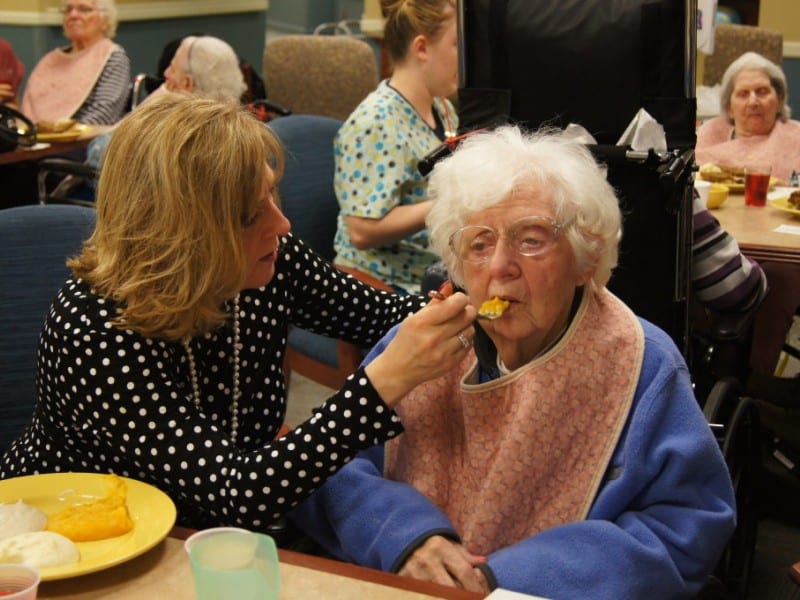
Have you ever choked on your food? It can be a terrible a feeling – the realisation you can’t take your next breath. It’s a moment where your life flashes before your eyes.
Choking is a particular problem in aged care. After falls, it is the second most-common cause of death in nursing homes.
For older people, as they age their swallowing function can deteriorate along with their teeth, which can be weak or even absent. The surfaces in the mouth and throat are also less moist. There is a loss of muscle strength in the mouth and throat that slows swallowing and makes it difficult to swallow hard or dry solid foods.
The following factors can increase the risk of choking:
Two-thirds of aged care residents – 67% – suffer from ‘dysphagia’, which means ‘swallowing problem’.
Dysphagia can affect healthy people, but it can also be the result of a stroke, head and neck cancer, dementia, and Parkinson’s disease.
Failure to properly manage dysphagia can be fatal. People with dysphagia can choke, become malnourished or dehydrated, or get pneumonia.
Speech pathologists are able to diagnose dysphagia. In rural and remote areas, where a speech pathologist may not be available, nurses can diagnose dysphagia.
They will look for:
Once a speech pathologist has made a diagnosis of dysphagia, the person’s meals must be adjusted immediately.
The speech pathologist will recommend a ‘texture-modified diet’ that will reduce the risk of choking.
A dietitian can help the resident and the facility develop a diet that ensures the resident is receiving adequate nutrients and fluids that meet the speech pathologist’s texture requirements.
Aged care facilities should regularly screen residents for dysphagia, and train staff to recognise signs of the condition.
Foods that present a choking hazard include:
Read Monash University’s recommendations for preventing injury-related deaths in aged care, including managing the risk of choking.